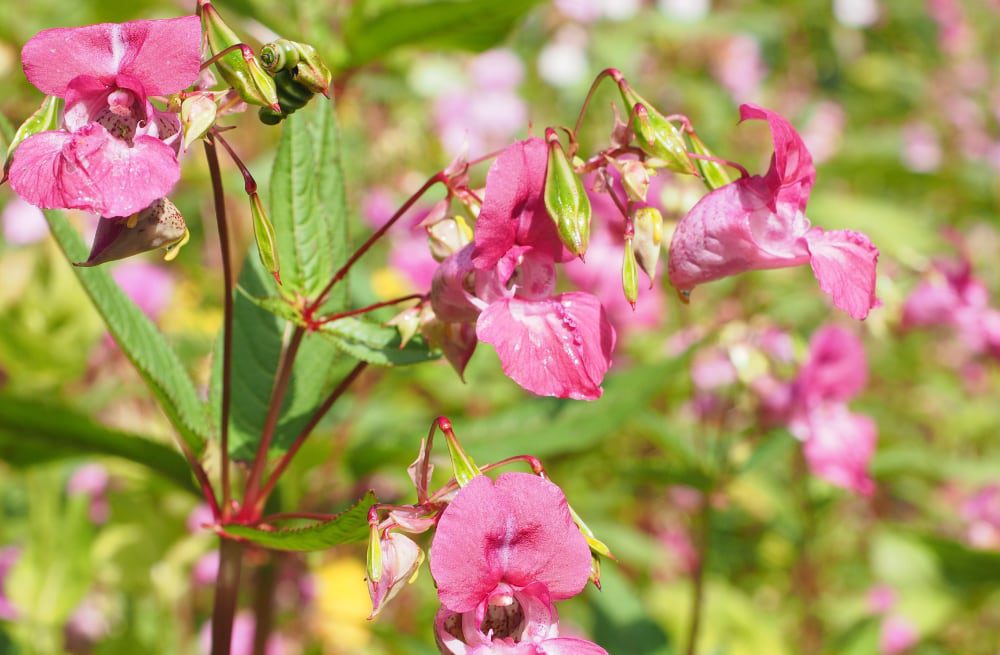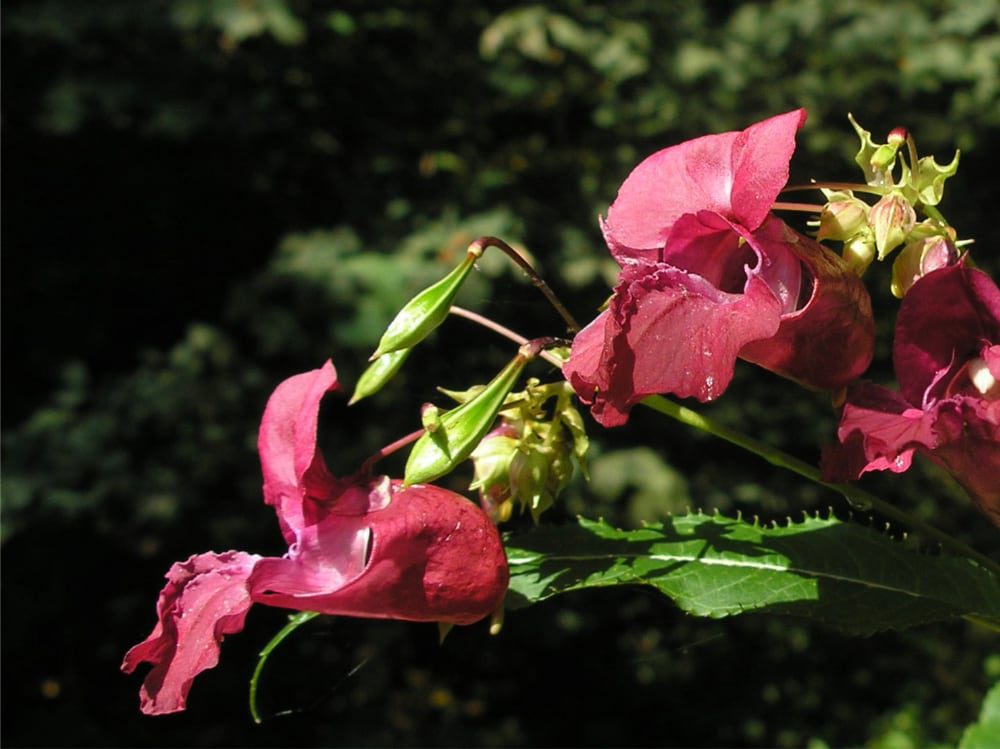Invasive species are plants, animals or pathogens that are non-native (sometimes known as alien) to the ecosystem and whose introduction causes or is likely to cause harm.
Let’s have a look at some invasive species and how to deal with them in case they should appear in your garden!
Himalayan Balsam
Himalayan Balsam is an invasive non-native plant species. It was introduced to the UK in 1839 from Northern India and is usually spotted on riverbanks and damp areas.
It can be identified by its reddish coloured stems and dark green, lance-shaped leaves with jagged edges and a dark-red midrib. Throughout June to October, the species can often be found with bright purple and pale pink coloured flowers which have explosive seed pods that throw seeds up to seven metres away from the plant, growing up to three metres tall!

The ideal time to remove Himalayan Balsam mechanically is early April/May. We recommend bagging the plant tops as it is essential to remove the species before its seeds disperse. Other methods of removal include cutting and digging up, as well as herbicide treatment.
Japanese Knotweed
Another invasive species to look out for is the Japanese Knotweed (FALLOPIA JAPONICA). Japanese Knotweed is an invasive non-native plant species that is notoriously difficult to remove permanently and easily. However, the greater the time allocated for removal the greater the chance of success.
Japanese Knotweed produces fleshy red tinged shoots when it first breaks through the ground, followed by large, heart or spade-shaped green leaves. Towards the end of July it produces clusters of cream flowers and then dies back between September and November, leaving brown stems.

There are many ways of removing Japanese Knotweed such as cutting, burning, stem injection, herbicide treatment and burial. However, clearing the leaves and stems of Japanese knotweed that are above ground, and then removing soil contaminated with roots, rhizomes and seeds can provide faster results than just spraying with herbicide.
If you need expert advice on removing invasive species, be sure to check out this article on our website https://terraqua.co.uk/control-nuisance-aquatic-plants/
